MSE students tackle summer projects to develop innovative educational kits that translate materials science and engineering to their peers
[sharexy]
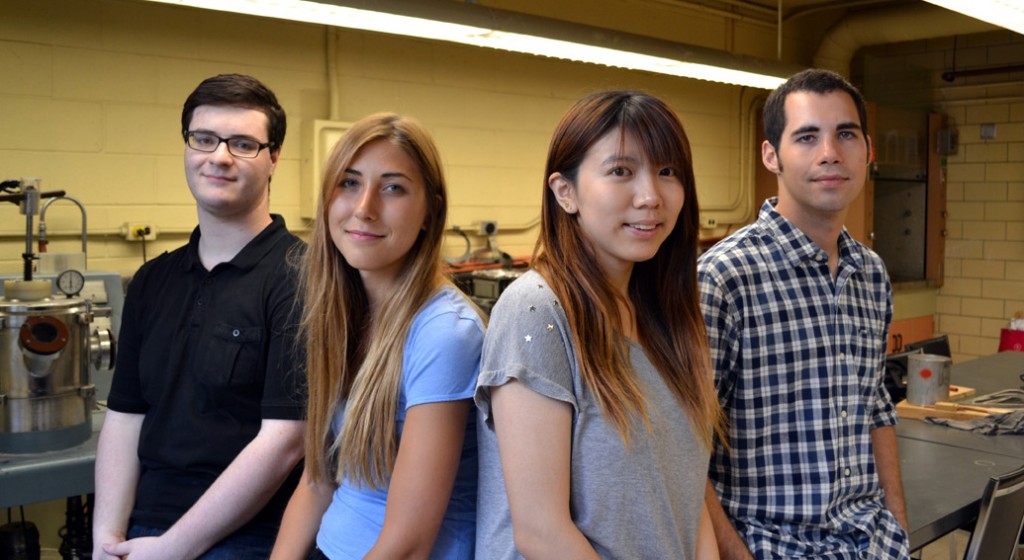
Photo: Materials One summer project students (from left) Roberto Aurilio, Anastasia Alksins, Xiaoji (Iris) Zhang, and Daniel Levitt
September 8, 2014
What do soap bubbles, grasshoppers, and elephant toothpaste have in common? It turns out – they all have features that can help students learn about modern materials and their engineering applications.
This summer, two teams of U of T Materials Science & Engineering (MSE) undergraduate students were tasked with developing a series of educational kits to help facilitate student learning in introductory concepts.
“The concepts we teach in materials engineering are often new to our students and can be challenging to grasp. There isn’t really an equivalent prerequisite course at the Ontario secondary school level,” said Dr. Scott Ramsay who teaches the materials science and engineering introductory course to first-year students across the Faculty of Applied Science & Engineering. “That’s why we have students come up with educational aids – to facilitate learning at a level that speaks to other students. And, it’s really a lot of fun for everyone.”
Here are the two groups that came up with some really fun and sometimes sticky learning activities:
Materials One
Undergraduate students Anastasia Alksnis, Roberto Aurilio, Daniel Levitt, and Xiaoji (Iris) Zhang were part of the Materials One team this summer. Together, they developed a series of hands-on activities and learning aids that complement MSE 101 – the first-year materials science and engineering course offered across the Faculty of Applied Science & Engineering.
“I hope our efforts will help future students engage with the curriculum and build a solid foundation for their upper year studies.”
One of these activities asks students to blow soap bubbles onto a flat surface forming a so-called ‘bubble raft.’ Developed in the late 1940s, this technique was first used by researchers to model atoms in solids. Now reimagined for MSE 101, students will be challenged to take photos of their bubble rafts showing the best examples of various microstructural features, such as grain boundaries, vacancies, and dislocations – features that contribute to materials properties and performance.
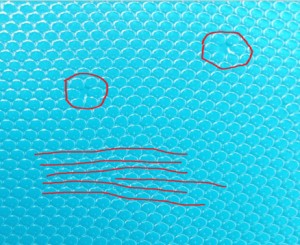
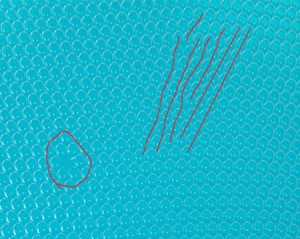
Photos: Bubble raft demonstration illustrating grain boundaries, vacancies, and dislocations – the features that contribute to materials properties and performance
“Working on the Materials One project was a great way for me to reinforce what I had learned in MSE 101,” said Levitt. “I hope our efforts will help future students engage with the curriculum and build a solid foundation for their upper year studies.” His sentiments were closely echoed by his three teammates.
Video: Dr. Scott Ramsay performs the elephant toothpaste experiment at a local elementary school, illustrating catalyzed decomposition of hydrogen peroxide – this particular experiment was prepared by Materials One project student Xiaoji (Iris) Zhang
The Materials One project is supported by the Dean’s Engineering Instructional Innovation Fund.
nanOntario
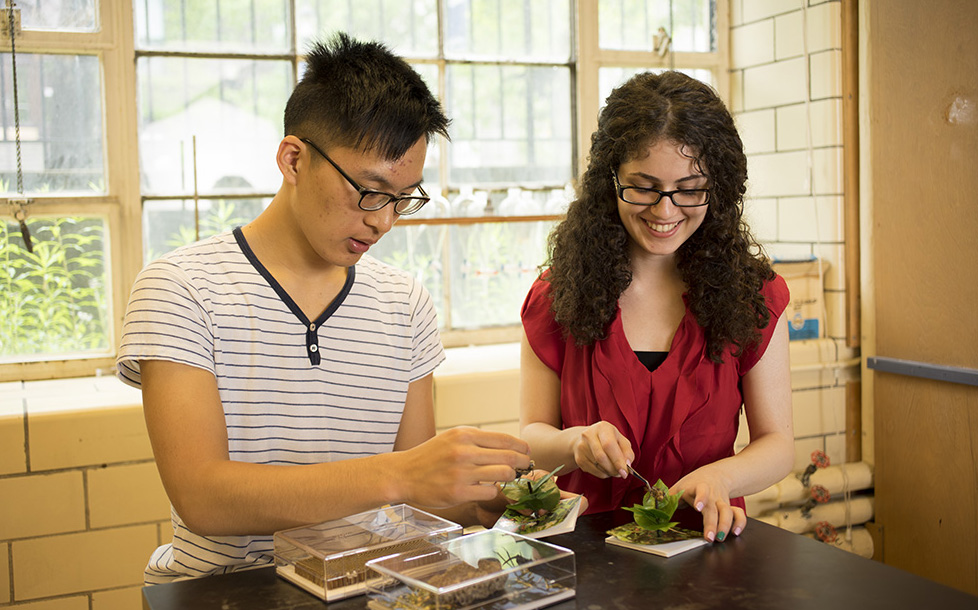
Photo: nanOntario summer project students Albert and Parisa prepare outreach kits
Now in its fifth year, nanOntario is a youth outreach program led by Professor Uwe Erb aimed to educate secondary school students about bio-inspired nanotechnology found in Ontario’s outdoors.
nanOntario is a youth outreach program aimed to educate secondary school students about bio-inspired nanotechnology found in Ontario’s outdoors
This year’s theme is Hexagonal Structures. In other words – it investigates the prevalence of six-sided surface structures in nature and how they have been mimicked to enhance human-made technologies.
For example, the legs of the Katydids – an insect similar to the grasshopper – have hexagonal micro-patterns that help them attach to surfaces when jumping from place to place. This similar pattern can be found in certain winter tires to improve traction for driving safety in slippery conditions.
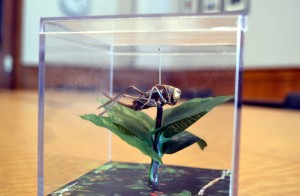
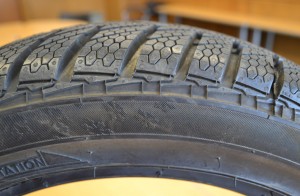
Photos: nanOntairo sample of the Katydids insect with hexagonal structures on their legs that help them attach to surfaces (left). A similar pattern can be found on certain winter tires to help improve traction for driving safety in slippery conditions (right).
“As students shift more of their studies towards the use of online materials, one of the best functions of classroom and tutorial time is to make use of demonstrations and hands on activities to facilitate different modes of learning. The ideal way to develop these new teaching materials is to involve students in their development from the very beginning,” said Professor Jun Nogami, Chair of the Department of Materials Science & Engineering. “I want to thank Uwe and Scott for their leadership in innovating new learning methods, and to all the students who put a lot of hard work into developing these aids that will help future generations of students learn about the exciting world of materials science and engineering.”